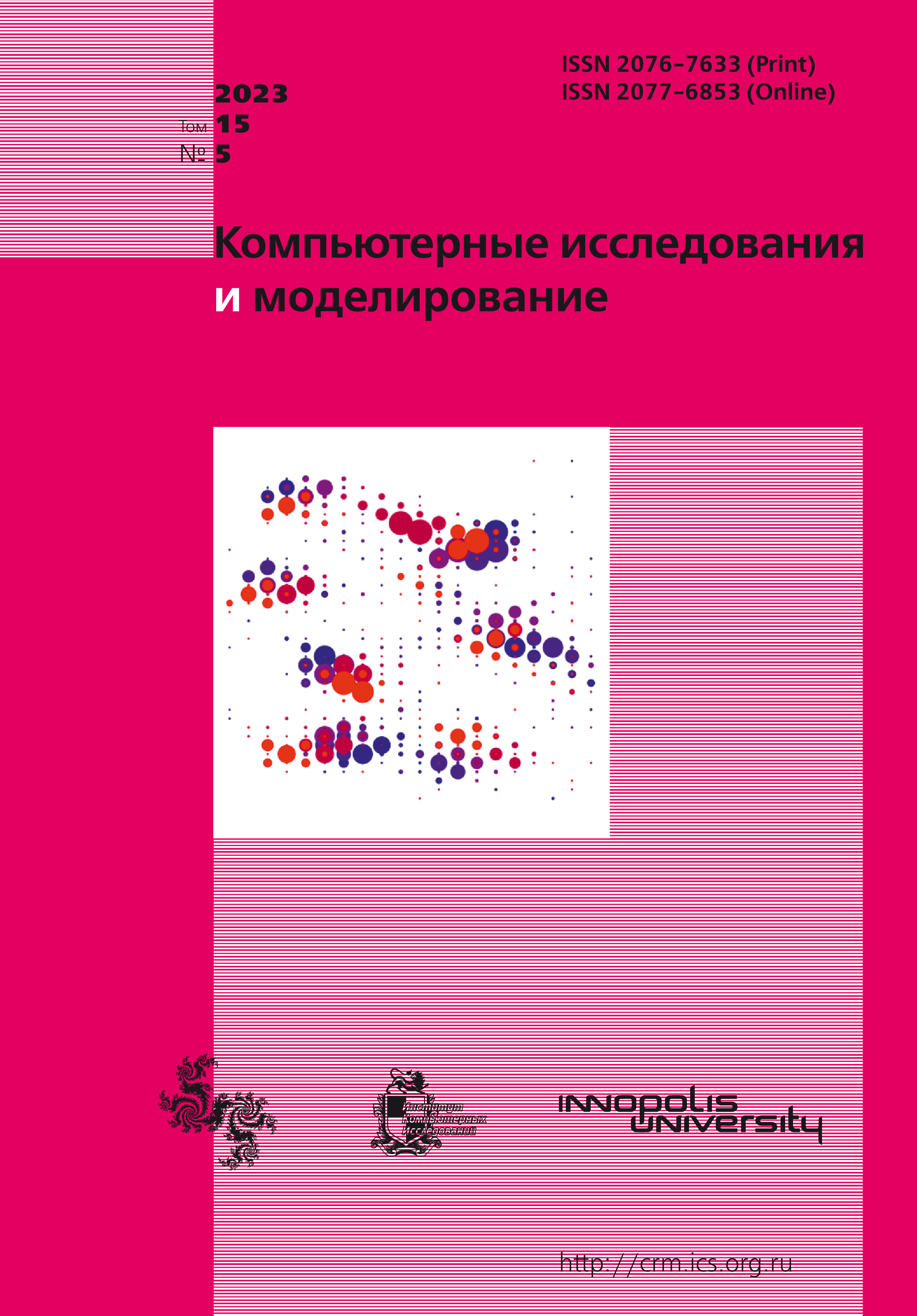All issues
- 2025 Vol. 17
- 2024 Vol. 16
- 2023 Vol. 15
- 2022 Vol. 14
- 2021 Vol. 13
- 2020 Vol. 12
- 2019 Vol. 11
- 2018 Vol. 10
- 2017 Vol. 9
- 2016 Vol. 8
- 2015 Vol. 7
- 2014 Vol. 6
- 2013 Vol. 5
- 2012 Vol. 4
- 2011 Vol. 3
- 2010 Vol. 2
- 2009 Vol. 1
Physical research and numerical modeling of the lower ionosphere perturbed by powerful radio emission. Part 2. Results of numerical calculations and their analysis
 pdf (3578K)
pdf (3578K)
The second part presents numerical studies of the parameters of the lower ionosphere at altitudes of 40–90 km when heated by powerful high-frequency radio waves of various frequencies and powers. The problem statement is considered in the first part of the article. The main attention is paid to the interrelation between the energy and kinetic parameters of the disturbed $D$-region of the ionosphere in the processes that determine the absorption and transformation of the radio beam energy flux in space and time. The possibility of a significant difference in the behavior of the parameters of the disturbed region in the daytime and at nighttime, both in magnitude and in space-time distribution, is shown. In the absence of sufficiently reliable values of the rate constants for a number of important kinetic processes, numerical studies were carried out in stages with the gradual addition of individual processes and kinetic blocks corresponding at the same time to a certain physical content. It is shown that the energy thresholds for inelastic collisions of electrons with air molecules are the main ones. This approach made it possible to detect the effect of the emergence of a self-oscillating mode of changing parameters if the main channel for energy losses in inelastic processes is the most energy-intensive process — ionization. This effect may play a role in plasma studies using high-frequency inductive and capacitive discharges. The results of calculations of the ionization and optical parameters of the disturbed $D$-region for daytime conditions are presented. The electron temperature, density, emission coefficients in the visible and infrared ranges of the spectrum are obtained for various values of the power of the radio beam and its frequency in the lower ionosphere. The height-time distribution of the absorbed radiation power is calculated, which is necessary in studies of higher layers of the ionosphere. The influence on the electron temperature and on the general behavior of the parameters of energy losses by electrons on the excitation of vibrational and metastable states of molecules has been studied in detail. It is shown that under nighttime conditions, when the electron concentration begins at altitudes of about 80 km, and the concentration of heavy particles decreases by two orders of magnitude compared to the average $D$-region, large-scale gas-dynamic motion can develop with sufficient radio emission power The algorithm was developed based on the McCormack method and two-dimensional gas-dynamic calculations of the behavior of the parameters of the perturbed region were performed with some simplifications of the kinetics.
Copyright © 2023 Moiseeva D.S., Stupitsky E.L.
Indexed in Scopus
Full-text version of the journal is also available on the web site of the scientific electronic library eLIBRARY.RU
The journal is included in the Russian Science Citation Index
The journal is included in the RSCI
International Interdisciplinary Conference "Mathematics. Computing. Education"






